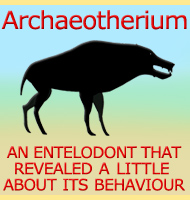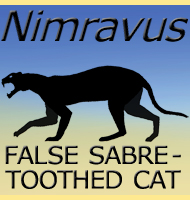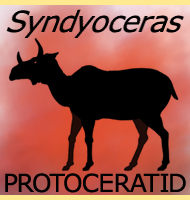


Paraentelodon
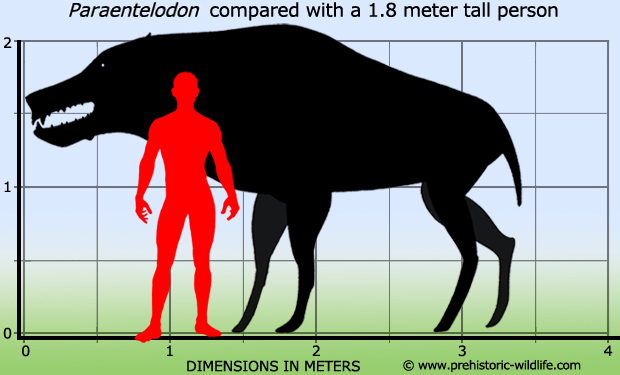
Name:
Paraentelodon
(Near perfect tooth).
Phonetic: Pa-ra-en-tel-o-don.
Named By: Gabunia - 1964.
Classification: Chordata, Mammalia,
Artiodactyla, Entelodontidae.
Species: P. macrognathus.
Diet: Omnivore?
Size: Around 2 meters tall.
Known locations: Asia.
Time period: Oligocene through to Burdigalian of the
Miocene.
Fossil representation: Several specimens.
Although
not especially one of the most well-known of the entelodonts,
Paraentelodon is one of the largest known genera
being comparable to
Entelodon
and Daeodon
in size. Paraentelodon appears in Asia as the
earlier Entelodon began to decline and continues to
be largest
currently known genus of entelodont in Asia in the early stages of the
Miocene. Daeodon also seems to have held a
similar ecological niche
as Paraentelodon during the early Miocene, but
is so far only known
from North America.
The
exact diets of entelodonts have always been subjects of debate for
palaeontologists because although they may have been capable of eating
plants, the larger ones such as Paraentelodon may
have used their
large size to either kill other animals or intimidate other predators
into giving up their kills.
Further reading
- The Evolution of Artiodactyls. - The Johns Hopkins University Press. - Donald R. Prothero & Scott E. Foss - 2007.
----------------------------------------------------------------------------
Random favourites
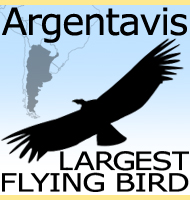 |
 |
 |
 |
